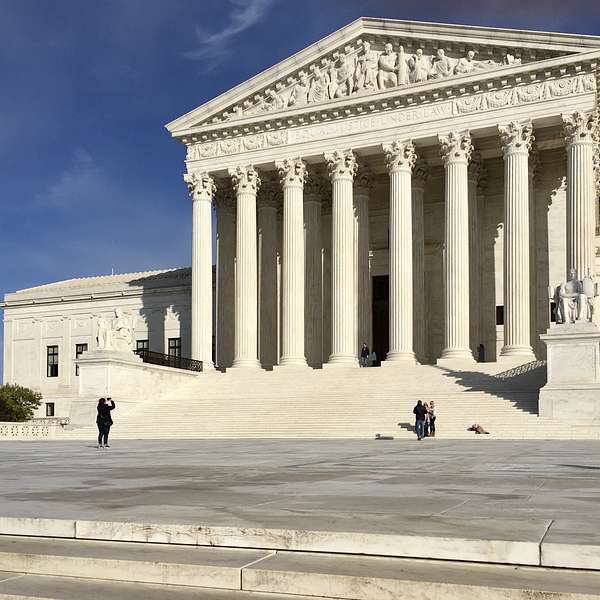
Supreme Court Decision Syllabus (SCOTUS Podcast)
Following what the Supreme Court is actually doing can be daunting. Reporting on the subject is often only done within the context of political narratives of the day -- and following the Court's decisions and reading every new case can be a non-starter. The purpose of this Podcast is to make it as easy as possible for members of the public to source information about what is happening at the Supreme Court. For that reason, we read every Opinion Syllabus without any commentary whatsoever. Further, there are no advertisements or sponsors. We call it "information sourcing," and we hope that the podcast is a useful resource for members of the public who want to understand the legal issues of the day, prospective law students who want to get to know legal language and understand good legal writing, and attorneys who can use the podcast to be better advocates for their clients.
*Note this podcast is for informational and educational purposes only.
Supreme Court Decision Syllabus (SCOTUS Podcast)
Goldey v. Field (Bivens / Excessive Force)
PER CURIAM. In Bivens v. Six Unknown Fed. Narcotics Agents, 403 U. S. 388 (1971), this Court recognized an implied cause of action for damages against federal officers for certain alleged violations of the Fourth Amendment. The Court subsequently recognized two additional contexts where implied Bivens causes of action were permitted, neither of which was an Eighth Amendment excessive-force claim. After 1980, we have declined more than 10 times to extend Bivens to cover other constitutional violations. Those many post1980 Bivens “cases have made clear that, in all but the most unusual circumstances, prescribing a cause of action is a job for Congress, not the courts.” Egbert v. Boule, 596 U. S. 482, 486 (2022). Despite those precedents, the U. S. Court of Appeals for the Fourth Circuit permitted the plaintiff here to maintain an Eighth Amendment excessive-force Bivens claim for damages against federal prison officials.
...
This Court has repeatedly emphasized that “recognizing a cause of action under Bivens is ‘a disfavored judicial activity.’” Egbert, 596 U. S., at 491. To determine whether a Bivens claim may proceed, the Court has applied a two-step test. First, the Court asks whether the case presents “a new Bivens context”—that is, whether the case “is different in a meaningful way” from the cases in which this Court has recognized a Bivens remedy. Ziglar v. Abbasi, 582 U. S. 120, 139 (2017); see Carlson v. Green, 446 U. S. 14 (1980); Davis v. Passman, 442 U. S. 228 (1979); Bivens, 403 U. S. 388. Second, if so, we then ask whether there are “special factors” indicating that “the Judiciary is at least arguably less equipped than Congress to ‘weigh the costs and benefits of allowing a damages action to proceed.’” Egbert, 596 U. S., at 492. That analysis is anchored in “separation-of-powers principles.” Ziglar, 582 U. S., at 135. This case arises in a new context, and “special factors” counsel against recognizing an implied Bivens cause of action for Eighth Amendment excessive-force violations. To begin with, Congress has actively legislated in the area of prisoner litigation but has not enacted a statutory cause of action for money damages. See Ziglar, 582 U. S., at 148– 149. In addition, extending Bivens to allow an Eighth Amendment claim for excessive force could have negative systemic consequences for prison officials and the “inordinately difficult undertaking” of running a prison. Turner v. Safley, 482 U. S. 78, 84–85 (1987). Moreover, “an alternative remedial structure” already exists for aggrieved federal prisoners. Ziglar, 582 U. S., at 137; see Correctional Services Corp. v. Malesko, 534 U. S. 61, 74 (2001). The existence of such alternative remedial procedures counsels against allowing Bivens suits even if such “procedures are ‘not as effective as an individual damages remedy.’” Egbert, 596 U. S., at 498. For the past 45 years, this Court has consistently declined to extend Bivens to new contexts. See Egbert, 596 U. S., at 490–491. We do the same here. The petition for certiorari is granted, the judgment of the U. S. Court of Appeals for the Fourth Circuit is reversed, and the case is remanded for further proceedings consistent with this opinion. It is so ordered.
